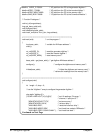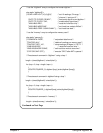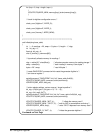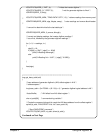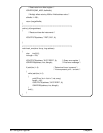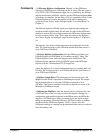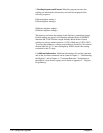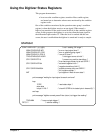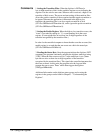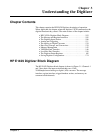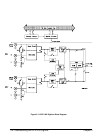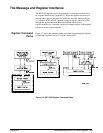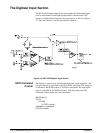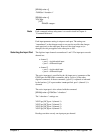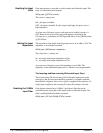
Using the Digitizer Status Registers
This program demonstrates:
• how to use the condition register, transition filter, enable register,
and status byte to determine when events monitored by the condition
register occur.
One of the conditions monitored by the operation status group’s condition
register is when the digitizer receives an arm signal. When armed, a
high-to-low transition of the wait-for-arm bit (bit 6) in the condition register
occurs. In this program, the digitizer is set to arm when the input signal on
the differential input reaches 3V. When the level is reached and the arm
occurs, the user is notified that the digitizer is armed and is ready to sample.
STATUS.C
CONF1:ARR:VOLT (1),5,(@3) /* set 1 reading, 5V range */
ARM:STAR:SOUR INT1 /* arm on input signal level */
ARM:STAR:SLOP1 POS /* arm on positive-going signal */
ARM:STAR:LEV1:POS 3 /* arm at 3V level */
TRIG:STAR:SOUR HOLD /* set trigger source to hold */
STAT:OPER:PTR 0 /* prevent any positive transitions */
/* from causing summary bit to set OPER */
STAT:OPER:NTR 64 /* set event register bit on */
/* negative transition of bit 6 */
STAT:OPER:ENAB 64 /* enable summary bit to set OPER */
/* bit in status register */
INIT /* put digitizer in wait-for-arm state */
print message "waiting for input signal to reach arm level"
loop
*STB? /* read status byte */
enter byte
is byte < 128. ? /* check if OPER bit in status byte is cleared (0) */
end loop
print message "digitizer armed; press Enter (return) to trigger the reading"
TRIG:IMM /* issue a single trigger */
FETC1? /* retrieve reading */
Chapter 2 Usin
g
the Di
g
itizer 101




